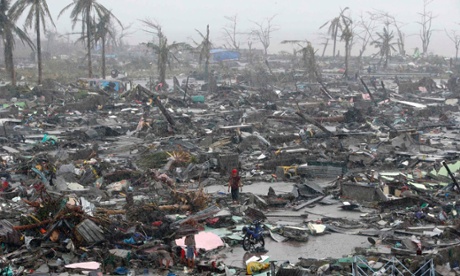Big data will enable microinsurance by improving weather forecasts -- and farmers will thrive throughout the developing world.
"'We’ll all be rooned,’ said Hanrahan….”
So goes the famous Australian bush poem by John O’Brien about the plight of farmers going from drought to flood to bush fire – one extreme weather situation after another. And though we are nearly 100 years on since that poem was written, we seem to be no further along in being able to predict weather with any certainty more than a few days into the future. In fact, extreme weather seems to be hitting more frequently and with greater ferocity because of the apparent effects of global climate change. The extended 2013 winter in Europe cost the economy there more than $7 billion – that is just from being cold for a month longer than usual.
Extreme weather events have dominated the headlines, especially where they impinge on highly developed insurance markets such as North America and Europe. But from the perspective of the impact on human lives, the greatest risk lies in Asia and Africa, where a vast majority of people depend upon subsistence farming and there is very little penetration of traditional financial services. A number of governments in the region, in partnership with semi-government, educational institutions and private organizations, have established a range of programs to foster the development of sustainable microfinance and microinsurance services for the most at-risk segments of their communities. In India alone, there are more than 700 million farmers and farm workers who struggle with extreme weather risk every season.
Building sustainable programs, now there's the trick!
In one program in India that ran from the mid-'80s through to the end of the twentieth century, the cumulative premiums were $80 million, while the cumulative claims were $461 – hardly a sustainable proposition. In another program, a World Bank study showed that the microinsurance proposition was advantageous to farmers only in very extreme situations, so in most cases it was uneconomic for farmers to buy the insurance.
From 2001, the Indian government has ensured the growth of microinsurance through a regulatory framework set up as part of the entry of private insurers into the market. Popular products in the sector are weather index policies, where payouts occur if rainfall is below a trigger level, in a particular area. The premium for these types of policy have proven to be expensive, but, with government subsidies and an education program, awareness and acceptability of this kind of financial service have grown in communities in rural India. Governments in China, Bangladesh, Indonesia and the Philippines are following suit, by introducing their own agricultural insurance programs.
The major problem for insurers writing this kind of business is getting a good handle on the risk, to enable correct pricing. For the most part, insurers have to rely on historical data, which really only establishes a wide range of outcomes; with extreme weather trends continuing, insurers tend to be very conservative in risk pricing.
This is where big data and analytics come in.
In the commodities sector, at least one player has marketed reports that help predict the price of commodity futures. A case in point is the recent U.S. drought. By using National Oceanic and Atmospheric Administration (NOAA) and NASA remote Earth-sensing data, and coupling with advanced climate predictive analytics, the U.S. drought was predicted three months in advance of the U.S. government's declaring drought. The model enabled the assessment of the weather impact on particular areas of the U.S., as well as the impact on the particular commodity crop grown in that area (corn), and, consequently, a prediction of the price of the commodity at harvest time based on the expected overall yield, with drought factored in.
Currently more than 15 petabytes of public data is produced annually that is global in nature, and the amount of data is set to increase to more 300 petabytes as more satellites come on line over the next few years. The computing power and technology to cope with huge data sets continues to improve each year with big data solutions.
These rich data sources and new technology solutions represent an unparalleled opportunity for governments and communities to turn microinsurance from a subsidized, unprofitable activity, to a sustainable model to spread economic stability and prosperity. By enabling the weather risk to be more accurately modeled, underwriters will be able to price policies on a more accessible basis.
Studies are showing that, where microinsurance is in operation, microfinancing is supported, as farmers can have certainty around being able to meet their loan commitments. These financial services are being used by farmers to improve their farms’ yield by investing in appropriate weather risk mitigation (irrigation, soil moisture conservation, etc) and productivity enhancements (planting automation, genetically modified seeds, fertilizers, improved pest control, etc). This virtuous cycle lifts this sector from depending on subsidies and government programs to being commercially viable and self sustaining. Definitely a win, win, win proposition.
Far from the pessimistic, doom-mongering of Hanrahan, I see a world more in line with Peter Diamandis’s vision as outlined in his book Abundance: The Future Is Better Than You Think.
I don’t know about you, but I for one would love the bragging rights to say my industry is helping to improve the lives of billions on planet Earth, while still making a commercially reasonable profit.
Hey, I wonder if it’s going to rain today?


